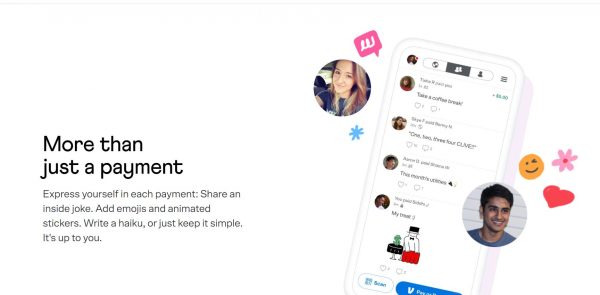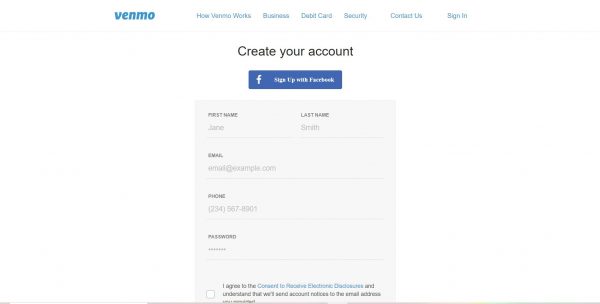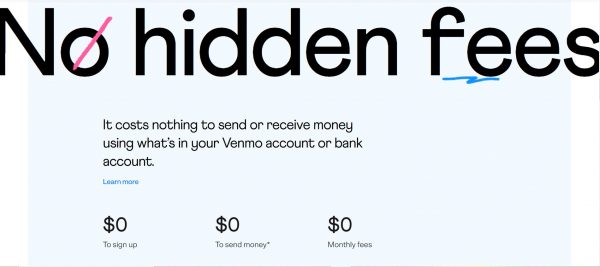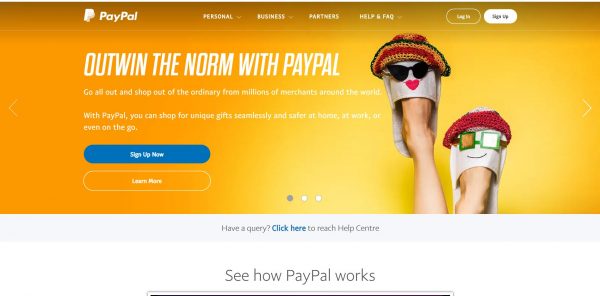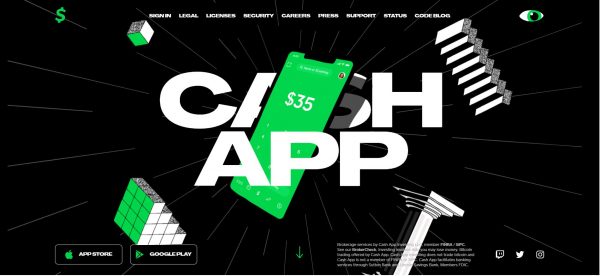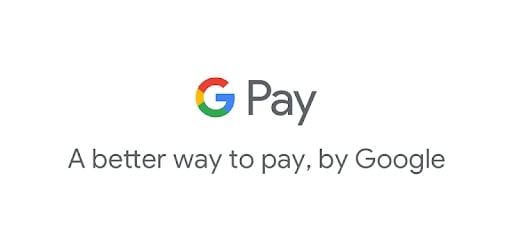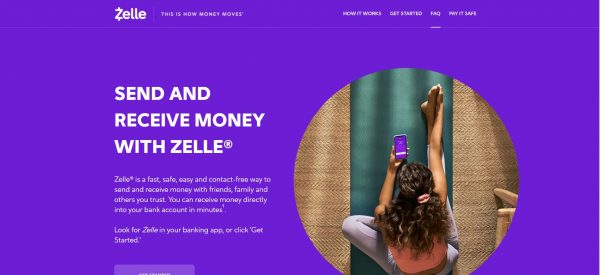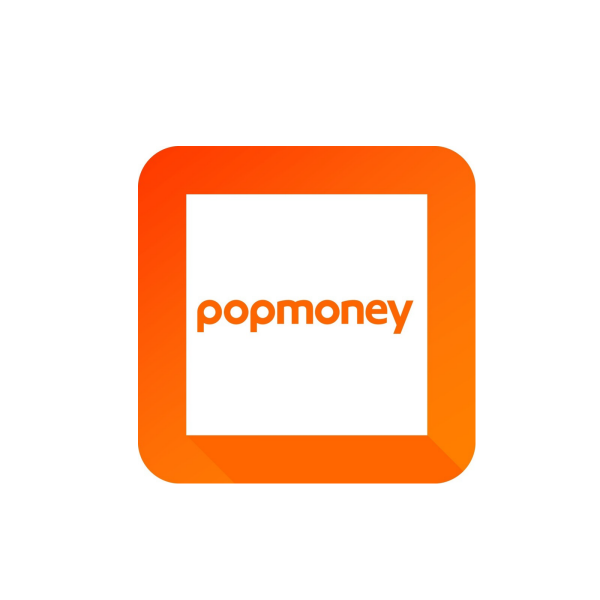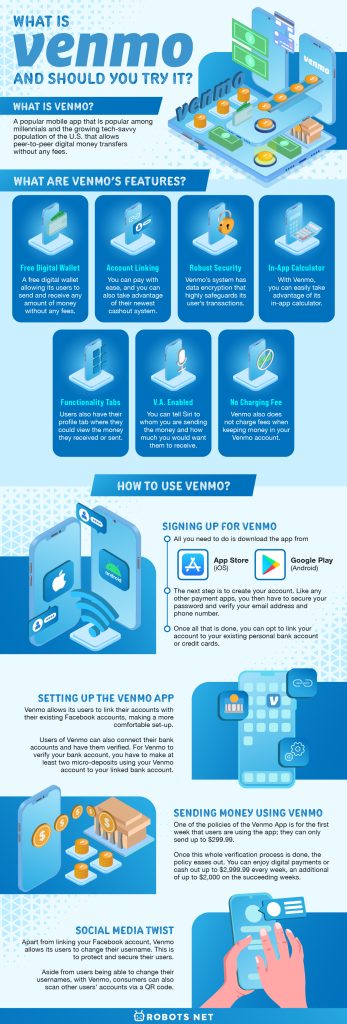What Is Venmo?
Venmo is a popular mobile app that is popular among millennials and the growing tech-savvy population of the U.S. that allows peer-to-peer digital money transfers without any fees. With this platform, digital payments are possible within a social network of users and merchants who use the app. Put merely, Venmo is a digital wallet allowing its users to transfer money, keep their money, and make payments free of charge and conveniently. In some ways, it works similar to other mobile payment services like Apple Pay and WePay. This platform is used for digital monetary transactions. With this app, users could make payments to dine out with their friends and split the bills afterward. Payments could also include splitting up the rent, bills, or even purchase of service or goods provided that the provider is also a Venmo user. Aside from peer-to-peer transfer, this platform is also used for making a cashout. The cashout is a feature offered by the app’s developers that gives the users options to take out their money using their debit cards with a minimal fee of $0.25. Although the limit on Venmo is that it is only available within the U.S., but with PayPal backing them up, they still have an endless growth opportunity in terms of its marketing capabilities.
What Are Venmo’s Features?
What makes Venmo interesting is its outstanding yet straightforward system allowing a smart exchange of funds. This platform not only adapts with the developments of our digital world, but it also stays competitive as it continues to attract its users with its interactive bookkeeping – which is a lot like the Facebook feed but only for your money transactions.
Free Digital Wallet
Venmo is a free digital wallet allowing its users to send and receive any amount of money without any fees, unlike the traditional money transfers. With Venmo, it’s convenient and cost-free. You can further simplify your transactions by linking your Venmo account with a debit card or a credit card.
Account Linking
By linking your Venmo account with your banking account or credit cards, you can pay with ease, and you can also take advantage of their newest cashout system. The cashout feature allows its users to take out money from their Venmo account serving their user’s varied preferences in terms of keeping their money. Although either user opts to keep their money on Venmo or do a cashout, Venmo is still essentially free to use with only a $0.25 fee for every cashout.
Robust Security
Aside from Venmo’s seamless edge, being owned by Paypal, users can also use the app worry-free due to the robust security systems of its mother company. Venmo’s system has data encryption that highly safeguards its user’s transactions. However, by default, Venmo payment transactions are shown publicly in the user’s feed. Still, users could always change the setting to private and continuously keep their transactions away from prying eyes. With Venmo being a digital-payment app, the money transfer method has been made easier and simpler. Venmo facilitates tracking your transaction history through your feed that provides a clean paper trail of your payments.
In-App Calculator
Unlike traditional payment system wherein people would scan through their wallet for payment and then wait for the receipt of their purchase, with Venmo, you can easily take advantage of its in-app calculator. All your transactions get recorded in an instant, regardless if you’re paying a merchant, a service provider, or even a friend who does not readily have a receipt. Being the digital wallet that Venmo is, users could let their money sit in there for a while until such time that they would want their money transferred to their bank account or they need to pay for a product or service.
Functionality Tabs
With Venmo, users may also view their payments made by others just by tapping the Globe icon on the top part of the interface, and what’s fun and unique about this is that users can interact through the added options of “like” and “comment” on each of these Venmo transactions. The Globe icon is a narrower feed showing your friends’ transactions and has the same feature that allows you to like and comment on these transactions. In a way, the limit on Venmo in terms of privacy with your transaction is this, but you can always opt to change your settings and have your Venmo payments private. Lastly, users also have their profile tab where they could view the money they received or sent, which makes it one of the great features of Venmo.
V.A. Enabled
Venmo is great for faster and seamless money transfer. So, with that in mind, they went the extra mile to deliver quality services to its users – allowing virtual assistant software like Siri to enable users to use the app without actually opening it. So, you can go ahead and tell Siri to whom you are sending the money and how much you would want them to receive.
No Charging Fee
Venmo also does not charge fees when keeping money in your Venmo account, which is why a lot of people use Venmo as a replacement bank account due to its easy-to-use features, lesser restrictions, and virtually zero-dollar fee.
Limitations
However, just like any other continuously innovating apps, Venmo also has its limitations. One of which is Venmo’s limited access outside of the U.S. in which even Americans could not access the app if they are not within the region. As for the user experience, Venmo lacks a little in that its verification system takes time, making instant transactions for new users quite restrictive. Some users may also be put off by the rigidity of the app. Today, only users of Venmo can enjoy the perks of this app, which means Venmo still has no links with other digital-payment platforms. Also, despite Venmo’s advertised security settings, its obscurity remains a concern, especially for users who are skeptical about such software. Despite Venmo’s limitations, it still provides an edge for its users as it is continuously developed for the more significant market. It still captures a tremendous amount of tech-savvies due to its minimal instantaneous bank transfer cost, free of charge in-app transfer, and simple transaction log.
How to Use Venmo?
Signing Up for Venmo
Developers also made signing up for a Venmo account easier so that users could instantaneously start making payments with their family and friends and even doing Venmo cashout. All you need to do is download the app from Google Play (Android) or the App Store (iOS). The next step is to create your account. You may manually enteryour necessary information or link your email or Facebook account with the app. Like any other payment apps, you then have to secure your password and verify your email address and phone number. Once all that is done, you can opt to link your account to your existing personal bank account or credit cards, or you could simply choose your Venmo account as your separate secondary bank replacement account.
Setting Up the Venmo App
Venmo allows its users to link their accounts with their existing Facebook accounts, making a more comfortable set-up. Other than linking users’ Facebook accounts, users of Venmo can also connect their bank accounts and have them verified. For Venmo to verify your bank account, you have to make at least two micro-deposits using your Venmo account to your linked bank account. This whole process of verification takes at least two to three business days. If you want to send money immediately, you may have to wait as it may take a while for your account to be verified.
Sending Money Using Venmo
One of the policies of the Venmo App is for the first week that users are using the app; they can only send up to $299.99. Although this seems to be another limitation on Venmo, it is also a way for them to secure and verify your account – making sure that you want to avail of their services and not use their app for scamming purposes. Once this whole verification process is done, the policy eases out. You can enjoy digital payments or cash out up to $2,999.99 every week, an additional of up to $2,000 on the succeeding weeks.
Social Media Twist
Apart from linking your Facebook account, Venmo allows its users to change their username. This is to protect and secure their users if they want to keep their monetary transactions private and only within a network’s select group. Knowing that Venmo is used for money transfer, this is one of its great features making users less prone to frauds and scams. Aside from users being able to change their usernames, with Venmo, consumers can also scan other users’ accounts via a QR code. Although security was heavily considered, this creates a limit in terms of functionality since users have to ask for another user’s exact username or QR code. It’s better to know that a mobile payment app highly values their consumer’s security.
Venmo vs. Competitors
Indeed, this platform is a game-changer among the varied digital-payment apps that are available on the market. Consumers now are more inclined to choose these types of platforms as a replacement for old-school banking. Due to its zero-cost feature, banks are also adapting as they consider revenue streaming through mobile apps such as Venmo. With this, other mobile-payment apps are also growing alongside technological developments, making the market more saturated for Venmo and thus influencing it to come up with more innovative ideas.
PayPal
The most well-known and one of the leading digital wallets that business users still use up to this date is PayPal. Venmo is more popular for day to day peer-to-peer money transfers. PayPal, meanwhile, has a broader range as its target market is that of people-to-business fund transactions.
Payment Transactions
Users may opt to use PayPal when it comes to making payments to more formal and known entities. These include businesses, online merchants, Uber, and the like. Venmo, on the other hand, has a more personal approach. Payments such as splitting rent with a roommate or dinner with colleagues. This can be more comfortable due to the social media-like features. Venmo is better for more personal transactions within a select group of networks. However, they only allow up to $3,000 of fund transfer to other users. However, the limit for PayPal is considerably higher at $10,000.
Availability
Aside from the difference with their target markets, both also cater to different places. Venmo is only available in the U.S. However, the developers are continuously improving the geological range. In contrast, PayPal provides a better range of over 200 countries worldwide. This makes PayPal a better choice when doing transactions outside the U.S.
Credit Card Charging
In terms of charges using the user’s debit cards, both PayPal and Venmo offer no fees. While for transactions using credit cards, PayPal charges 2.9% of the money transferred plus $0.30 per transaction. As for Venmo, credit card transactions are charged at 3% of the amount being transferred to another Venmo user. Lastly, for both PayPal and Venmo, users could enjoy free transfer of their funds from these digital wallets to their bank accounts. PayPal has the advantage when sending or receiving money from people outside the user’s social network. Conversely, Venmo is a better option for simple day-to-day fund transactions. Check out more PayPal alternatives you can choose.
Payoneer
Payoneer boasts over three million users globally and is also an online money transfer platform. While Venmo’s coverage is limited to the U.S., Payoneer has a tremendous advantage when sending and receiving payments internationally. Payoneer offers more currencies equipping it with a better edge. Payoneer’s consumers get to choose the currency they send or receive, whether in USD, Euros, Pounds, Japanese Yen, or Chinese currency – which means they have a better advantage in foreign exchange rates. Other than that, with Payoneer, users can cash out internationally using their issued cash cards. The limit in Venmo is that they are focusing on its fewer target market. Thus, it is only available to a narrower network of users and currency exchange capabilities.
Square Cash/Cash App
Cash App, just like Venmo, has a more prominent company behind them. Cash App is another money-transfer mobile software from Square Inc. It is free and easy to use the app. One feature that Cash App has is using the cash tag or $ sign before each username of its consumers. Apart from that, Cash App offers more effortless connectivity when finding peers through Bluetooth enabled system. This is wherein users can easily track other Cash App users who are nearby without passing the need to type the username or scan the QR code of others. Cash App only allows its users to link one bank account and one credit card. In terms of the speed of sending or receiving money, Cash App is at par and is ideal for day-to-day transactions. Cash App also offers free debit cards. Also, users have the option to customize and personalize their cards completely. Further, the app also provides card bonuses due to its boost feature, which instantaneously provides transfer bonuses and discounts that uses could enjoy for their grocery or shopping. Another feature that Cash App boasts is its interface’s ability to provide its users with the option to filter their transaction logs, allowing a more organized tracking of their user’s money transfers. Cash App offers a slightly higher charge at 1.5% of the money transfers. In essence, it has a more personalized edge when it comes to organizing and keeping records private.
Google Pay
Google Pay is similar to Venmo as both are free to download. The linking of debit cards or bank accounts are essentially the same. The only advantage of Google Wallet is that consumers from the U.K. could also access the app. Venmo is only accessible throughout the U.S. Also, Google Wallet is only available to Android users, making Venmo a better lead as its app is available to both iOS and Android users.
Zelle
Zelle is the innovative solution of U.S. banks to the increasing digitally inclined population who opts for money transfer apps. This service aims to keep U.S. banks in with the trend. With many similarities to Venmo, Zelle also offers an in-app calculator that facilitates the splitting of payments. Payments between peers and monetary transfers to the user’s network. Users can enjoy this for free if they have an existing bank account that is in partnership with Zelle. Zelle is Venmo’s most prominent competitor as Zelle’s bank tie-ups within the U.S. are significantly outstanding. People opt for Zelle for bills and rent payments because of its more conservative features.
Popmoney
Popmoney is another digital payment provider that allows users to transfer monetary funds between its financial institution partners. Venmo is slightly in the lead due to its low charge when sending money. This is because Popmoney charges its users $0.95. On the other hand, Popmoney has a better market advantage than Venmo. This is because small businesses in the U.S. allow money transfer to their employees and supply-chain. However, with Venmo, their market is still heavily reliant on their user’s social group of networks.
Is Venmo Worth Trying?
Venmo is among the most competitive and reliable digital payment apps that could replace the use of credit cards. This payment platform could encourage innovations in the way people send and receive money, keep transaction logs, and take cashouts. As the digital world continues to grow, this platform has undoubtedly secured a lead. And with the app’s current limitations, it is at a better advantage of finding better ways to innovate.

